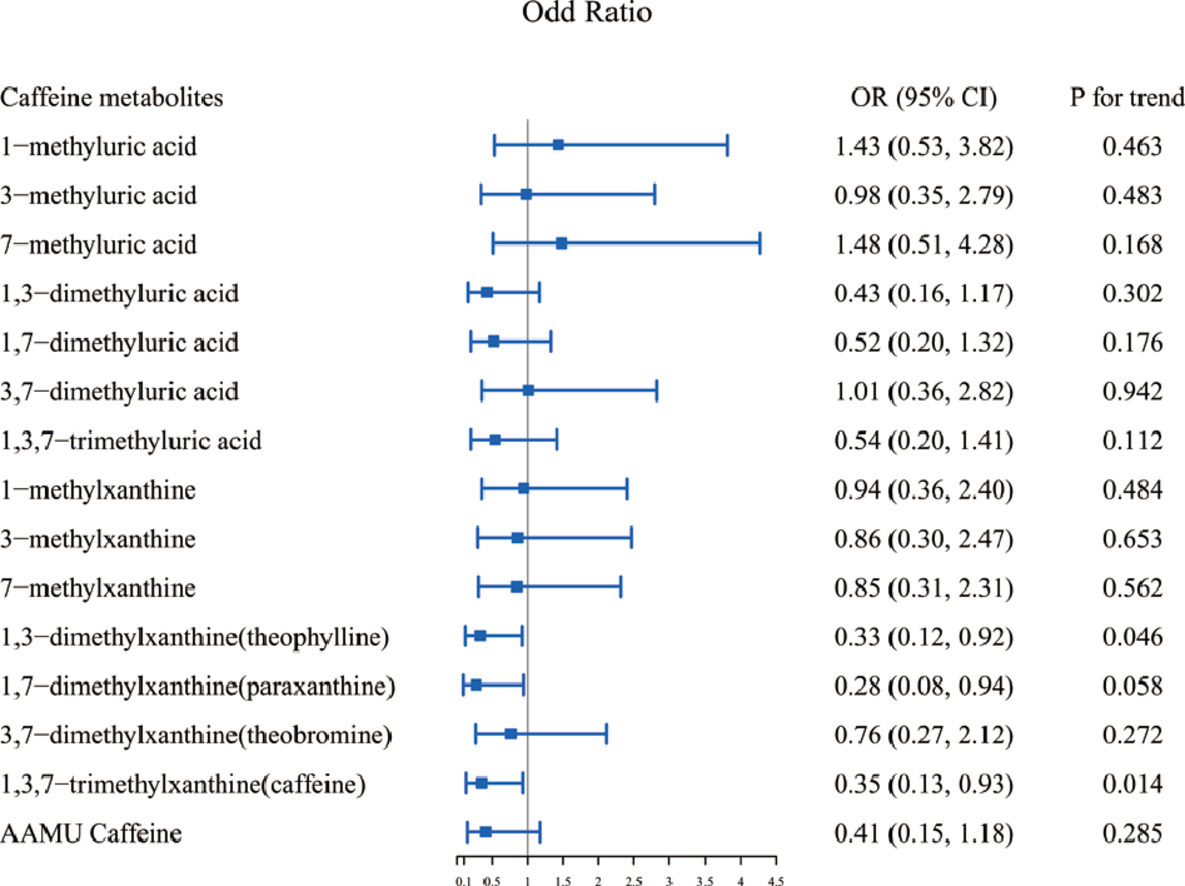Association of urinary caffeine and caffeine metabolites with cardiovascular disease risk in adults
Zhenkun Weng Nutrition Volume 84, April 2021, 111121
Highlights
• Increasing levels of urinary caffeine and theophylline were inversely associated with cardiovascular disease.
• Urinary caffeine levels were inversely associated with coronary heart disease in women.
• Urinary theophylline levels were inversely associated with coronary heart disease in women.
Objectives
Studies have shown that the consumption of a moderate amount of caffeine is associated with a reduced risk of cardiovascular disease (CVD) and may even be protective against CVD. The purpose of the current study was to evaluate the association between urinary caffeine and its related metabolites and CVD risk in a national representative sample of US adults.
Methods
We analyzed cross-sectional data from the US National Health and Nutrition Examination Survey from 2009 and 2010. The associations between the levels of urinary caffeine metabolites and self-reported CVD, including congestive heart failure, coronary heart disease, angina, heart attack, and stroke, were examined separately in men and women using multivariate logistic regression models adjusted for covariates.
Results
In total, 1916 participants (910 men and 1006 women) were included in the analysis. Among women, the odds ratios of CVD in the highest quartiles of 1,3-dimethylxanthine and 1,3,7-trimethylxanthine were 0.33 (95% confidence interval [CI], 0.12–0.92) and 0.35 (95% CI, 0.13–0.93), respectively, compared with the lowest quartiles. Each one-unit (µmol/L) increase in theophylline concentration was associated with a 0.24-mg/dL increase in high-density lipoprotein cholesterol in the fully adjusted model. Among men, no significant association was observed between urinary caffeine metabolites and CVD. Regarding the subtypes of CVD, compared with women in the lowest quartile for 1,3-dimethylxanthine and 1,3,7-trimethylxanthine, the odds of coronary heart disease decreased by 90% (95% CI, −99% to −11%) and 97% (95% CI, −99% to −47%), respectively, in those in the highest quartile.
Conclusions
Urinary 1,3-dimethylxanthine and 1,3,7-trimethylxanthine were significantly and inversely associated with CVDs in women. Additional studies are needed to further confirm the results of this study and explore the underlying mechanisms.














